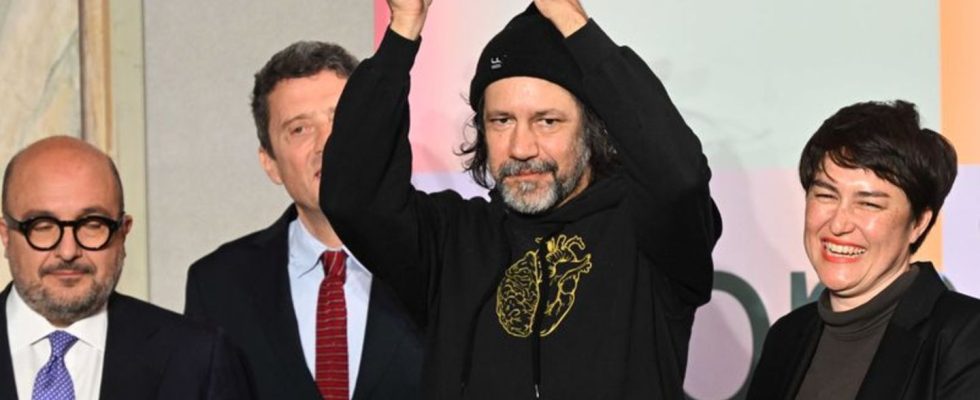Art
Venice Biennale honors indigenous artists
The artist Archie Moore (m.) was honored with the Golden Lion. photo
© Felix Hörhager/dpa
The experience of strangeness is the focus of the Venice Art Biennale. Now indigenous artists have received the most important prizes at the world-famous art event.
Archie Moore designed the Australian pavilion under the title “kith and kin” (in Middle English: “friends and family”) and received the Golden Lion for the best national contribution. In his exhibition in the Giardini, Moore deals with the history of the Aborigines, to which he himself belongs: On the walls and ceiling of the exhibition, a family tree of two indigenous Australian tribes is handwritten in chalk.
The Mataaho Collective received the award for best artist. The artist group consists of four Maori women. The indigenous people of New Zealand are called Maori. In the Arsenale, the four artists show large-format fiber installations that deal with the intricacies of life and the knowledge systems of the Maori.
Indigenous artists are taking a prominent position at the 60th edition of the Venice Art Biennale. Under the title “Stranieri Ovunque – Foreigners Everywhere” (in German: “Foreigners Everywhere”), the main exhibition deals with foreignness and marginalized communities. At the art biennale, curated by the Brazilian Adriano Pedrosa, indigenous artists exhibit in various national pavilions.

